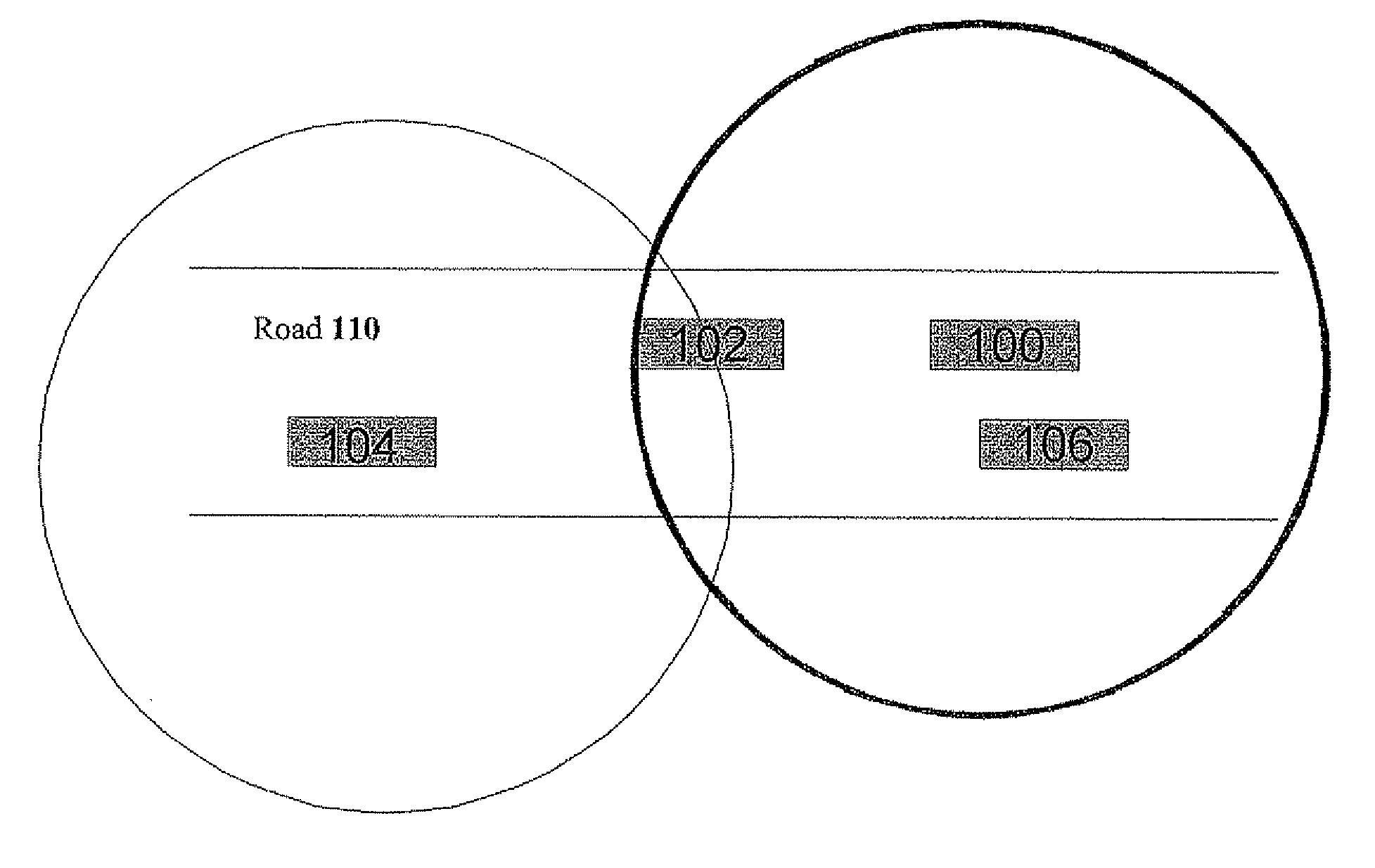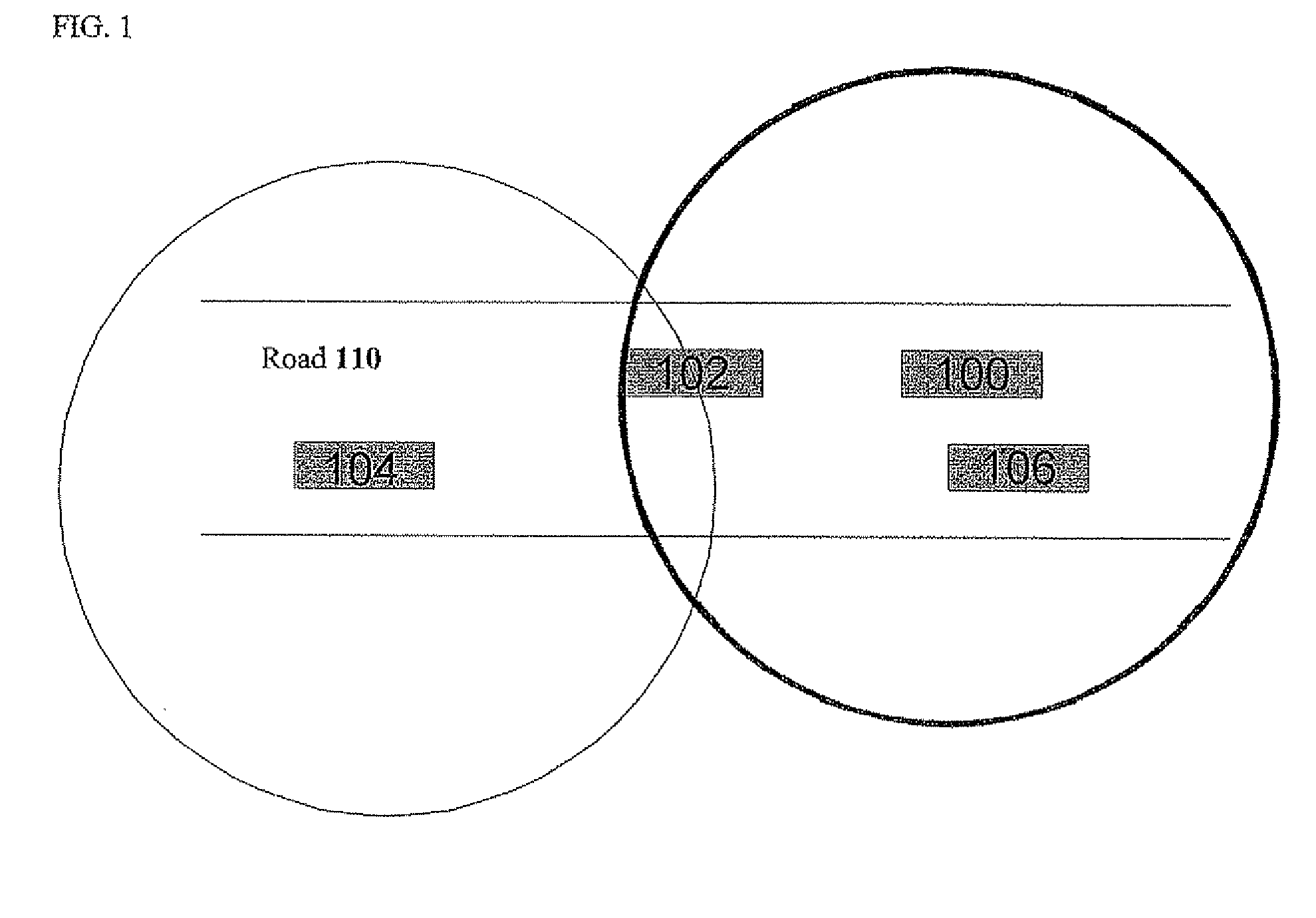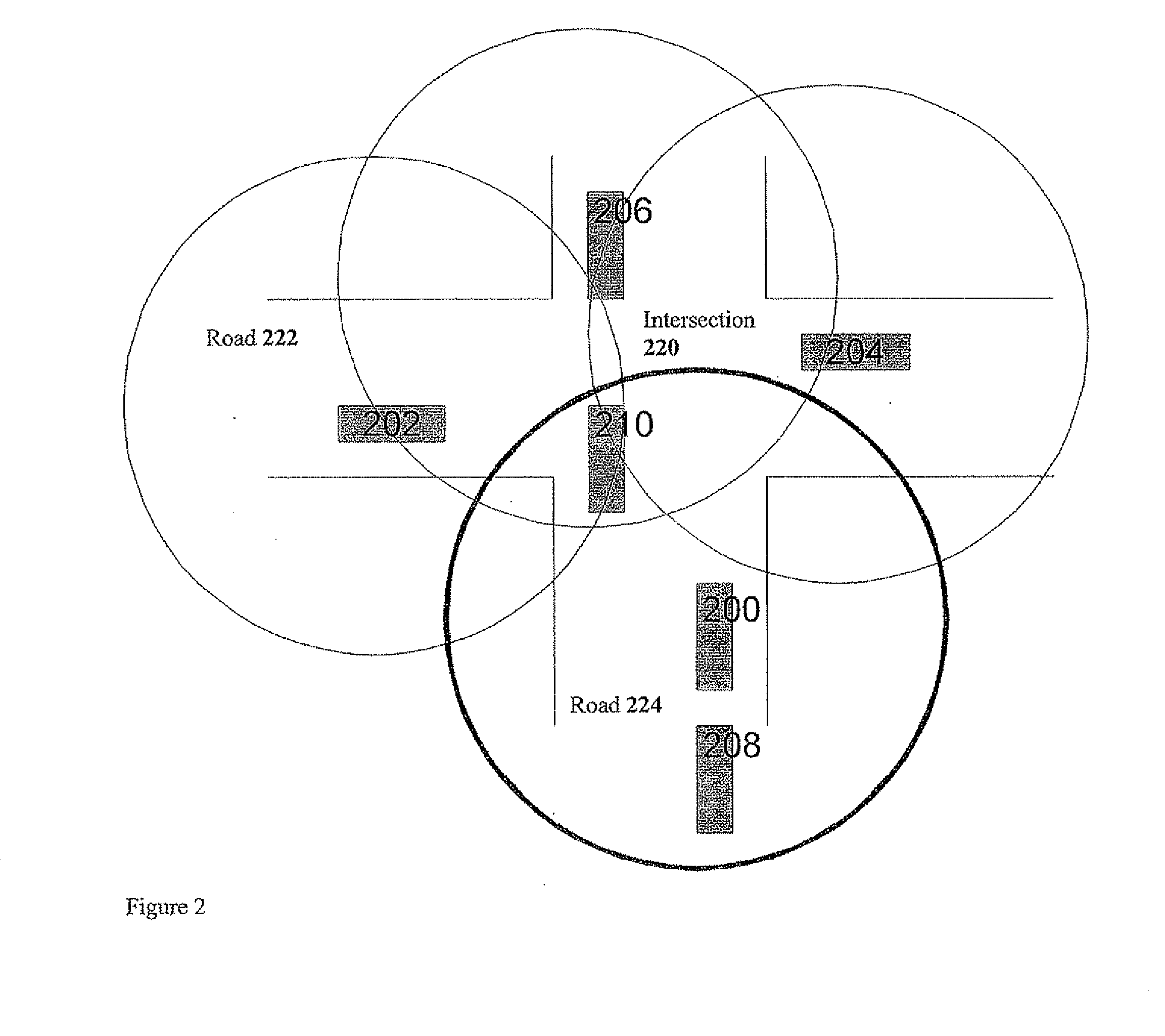Reliable broadcast transmission in a vehicular environment
- Summary
- Abstract
- Description
- Claims
- Application Information
AI Technical Summary
Benefits of technology
Problems solved by technology
Method used
Image
Examples
Embodiment Construction
[0025]The invention provides a solution to the hidden node and other problems of known vehicular communication schemes by combining geographical information (a “dynamic local map”) with a RTS / CTS handshake between a driven vehicle (also referred to hereinafter as “car”) and a “pivot” vehicle. The invention is described from the perspective of the driven vehicle, which may be any vehicle on the road. The location information is provided in the beacons and is collected in a geographical database by the driven vehicle. By knowing which vehicles in a specific area require information in order to analyze road events (such as emergency braking or intersection traffic-law violations) the invention enables to select a vehicle that will act as the pivot vehicle which clears interfering transmissions in its proximity. The pivot vehicle returns a CTS message to the RTS message sent by the driven vehicle.
[0026]It is emphasized that broadcast RTS / CTS solutions for a vehicular environment are not...
PUM
 Login to View More
Login to View More Abstract
Description
Claims
Application Information
 Login to View More
Login to View More - Generate Ideas
- Intellectual Property
- Life Sciences
- Materials
- Tech Scout
- Unparalleled Data Quality
- Higher Quality Content
- 60% Fewer Hallucinations
Browse by: Latest US Patents, China's latest patents, Technical Efficacy Thesaurus, Application Domain, Technology Topic, Popular Technical Reports.
© 2025 PatSnap. All rights reserved.Legal|Privacy policy|Modern Slavery Act Transparency Statement|Sitemap|About US| Contact US: help@patsnap.com



